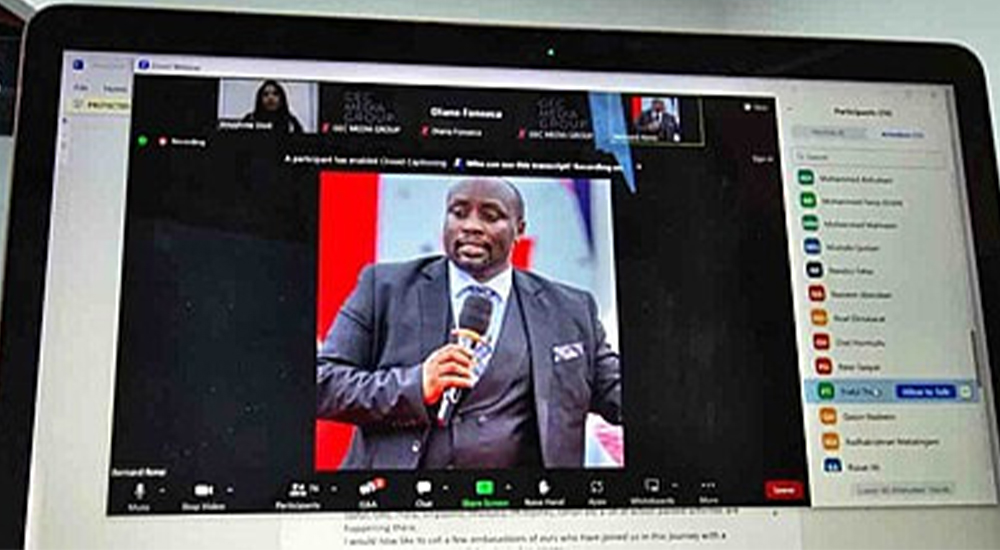Utilities companies should be used to the occasional existential threat. Today, electric utilities are facing an Amazon moment with the arrival of a vast array of digital newcomers and increased complexity, from blockchain-enabled electricity trading platforms to smart neighborhoods. Across the board, utilities are facing de-commoditisation that requires them to fight for relevance to the customer.
It is kind of scary for those of us representing the incumbent player, Tronder Energie Chief Digital Officer, Svein Erik Jorgensen said in a recent event on the energy and utilities industry. Behind-the-meter technology for local production and storage of energy optimisation is really advancing at a rapid pace while the prices for these local authorities are steadily declining.
Power companies need to maintain reliable service even as distributed generation obscures supply and demand dynamics that drive their capital investments. According to the Solar Energy Industry Association, 4% of households in the US get electricity from rooftop solar panels with a projected 13% by the end of the decade.
This means power utilities must figure out just and transparent ways to communicate to rate payers about what they generate and sell back, what external power they consume during times of high demand and what they pay for that peak-hour consumption. Other consumers may want to purchase green energy or shift consumption to times when it can be more easily met by renewables.
How should electric companies respond? Part of the answer may come through deep insights on usage bundled in with the monthly bill, either in the mail or online. This requires heavy investments in omnichannel communication, however.
Utilities providers can also tap into innovation to provide digital services and new physical service lines such as electric vehicle charge point installation or wireless charging. To do this profitably, they must bone up their enterprise project management and field service capabilities.
As things stand, utilities still own the customer relationship. And they have the financial muscle—sometimes backed by the ability to rate base investments—to invest in new technology platforms and recruit skilled IT professionals. What kinds of technology platforms should be considered? This will depend on the specific requirements of the organisation and what it already has in place. But some pointers might include:
# Prioritising data collection and technician service portals. Data on what customers and rate payers consume can be used to create net new value by capturing data from the internet of things and making it visible to end users in usable formats. And this data should be available to field service techs and the call center so they can use it to deliver successful moments of service.
# Making sure your enterprise software makes the most of your human resources. With more shifts towards clean power and the possibility of a skills shortage in the industry, managing talent is more vital than ever.
# Improving project and asset management. Utilities will always be dependent on long-lived, expensive assets, but consumption patterns are changing multiple times over the lifecycle of each asset, which means more lifecycle extensions and refits that must be managed profitably and with minimal disruption to service.
# Creating an airtight customer experience. All utilities will need to get serious about omnichannel communication that unites communications across text, email, phone and in-person settings into a single version of the truth while harnessing artificial intelligence to get more out of contact center employees.
The new enterprise software platforms adopted by utilities—most likely in the cloud, although with the option for on premise deployment if rate-basing requirements demand it—should pave the way for a new utility model.
In this model, utilities companies will no longer just provide basic services such as power or water. Instead, they will be able to offer a range of service packages, potentially spanning areas as diverse as carbon trading and urban mobility services.
Due to the growing complexity of their business models, utilities have found that the velocity of change now means you cannot really afford to innovate with a homegrown system. You need to standardise on a single digital backbone from customer engagement to asset management to field service.
Omnichannel communication systems that share data with operational technologies, and the enterprise project management and asset management systems used on the capital equipment that delivers value will enable a utility to leverage highly granular knowledge of customer habits and needs. They will also provide transparency about usage, impending stoppages and pending new capabilities.
This vision may seem far-fetched, but just look at where telecommunications companies are now compared to a couple of decades ago: who would have predicted that they might become content providers and online retailers?
Even as telecom providers face continuing disruption, electric utilities are at the point of jumping to a new phase of evolution, where only the fittest will survive.

Key takeaways
- Utilities can tap into innovation to provide digital services and electric vehicle charge point installation or wireless charging.
- Utilities must bone up their enterprise project management and field service capabilities.
- Power companies need to maintain reliable service even as distributed generation obscures supply.
- As things stand, utilities still own the customer relationship.
- Due to complexity of business models, utilities have found velocity of change means you cannot innovate with a homegrown system.
- You need to standardise on a single digital backbone from customer engagement to asset management to field service.
The answer may come through insights on usage bundled in monthly bills, requiring investments in omnichannel communication, says Michael Ouissi at IFS.




